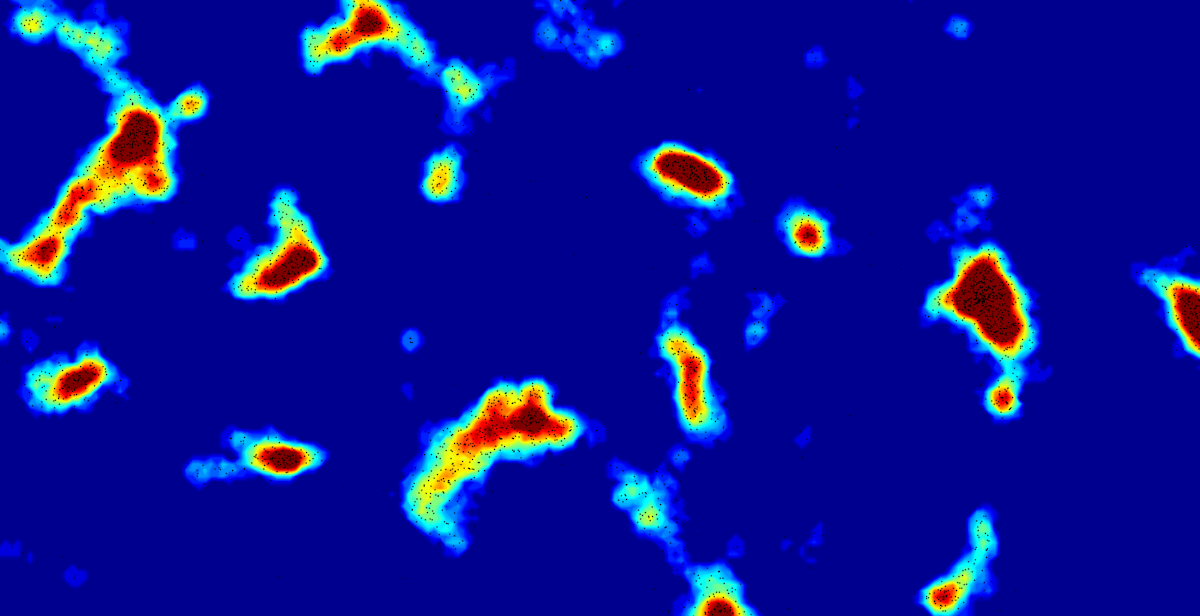Solar atmospheric abundances in space and time
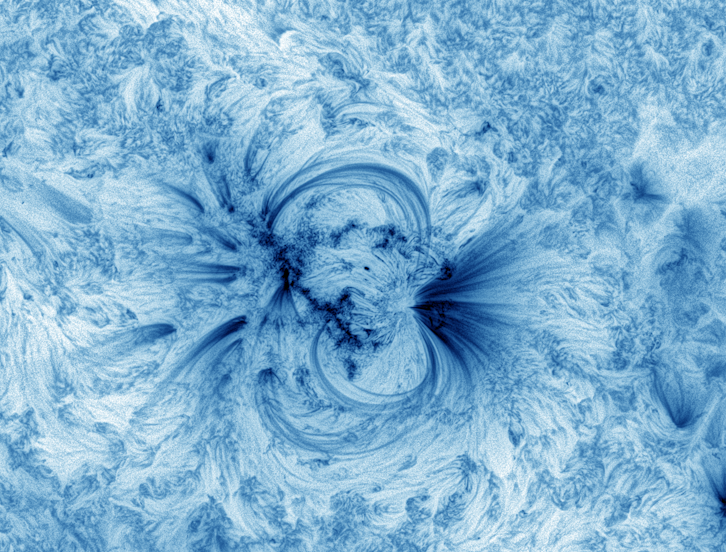
Theo Murphy meeting organised by Dr David M Long, Dr Deborah Baker and Professor David H Brooks.
A focused meeting to discuss the leading models proposed to explain elemental abundance variations in the solar atmosphere and examine how they compare to high resolution observations from current space missions (such as Hinode, IRIS, and Solar Orbiter). Implications for the development of future solar missions (Solar-C), and the understanding of activity in solar-like stellar coronae will also be discussed.
Organisers
Schedule
Chair
Dr Deborah Baker
University College London, UK
Dr Deborah Baker
University College London, UK
Deb Baker is a Senior Research Fellow at University College London/Mullard Space Science Laboratory. She is the Hinode/EIS Project Scientist (UK). Her research interests include plasma composition, active region outflows, jets, CMEs, flares, solar wind source regions and connectivity science.To date, she has published over 85 academic papers in peer reviewed scientific journals.
| 09:00-09:05 |
Welcome by Dr David Long

Dr David LongDublin City University, Ireland 
Dr David LongDublin City University, Ireland David Long obtained a 1st Class Honours (BA Mod, Physics with Astrophysics) from Trinity College Dublin. This was followed by a PhD in Solar Astrophysics, also from Trinity College Dublin, during which time he spent time as a Predoctoral Fellow at the Harvard-Smithsonian Centre for Astrophysics in Cambridge, MA. He then moved to University College London, where he was an Early-Career Leverhulme Fellow, followed by a STFC Ernest Rutherford Fellow. In 2019, he became a Lecturer in Solar Physics at University College London, and in 2000, he became the UK Principal Investigator for the Extreme Ultraviolet Imager onboard the ESA/NASA Solar Orbiter spacecraft. In 2022, he moved to Queen's University Belfast as a Research Fellow, before starting a position as an Assistant Professor at Dublin City University in 2023. His research focuses on the initiation and evolution of solar eruptions in the solar atmosphere, and to date he has published more than 100 academic papers in peer reviewed scientific journals. |
|---|---|
| 09:05-09:30 |
Twenty-one years of the ponderomotive force model of the FIP effect
I will attempt to review and reflect on developments in the ponderomotive force model of the First Ionization Potential (FIP) effect, since its first presentation as a poster at the 2004 AAS meeting in Denver CO (May 30th – June 3rd), and as a talk at COSPAR in Paris later that summer (18th – 25th July). I will pay particular attention to how my understanding of the relevant wave physics has improved in that time. The ponderomotive force appears to have been a completely new means of ion-neutral separation in solar physics or astrophysics, though it was not new to science. Had I had my wits about me in 2004, I would have realised that this mechanism represents an analog in magnetohydrodynamics of the optical part of a magneto-optical trap. As it was, it wasn't until I read about Arthur Ashkin's Nobel Prize in 2018 in Physics Today that the penny dropped about the exact physics involved. The basic model, that the coronal magnetic field geometry dictates the properties of the Alfvén wave field through resonances and interference, and that these different wave properties give rise to the different FIP effects seen in different coronal structure still holds, though ideas about the wave origins have evolved. I will illustrate the varieties of FIP fractionation that can occur, how they relate to the underlying solar geometry, and how such phenomena may be used to investigate other aspects of solar physics. 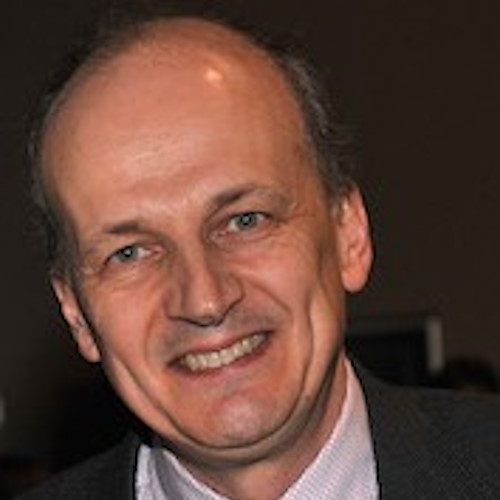
Dr Martin LamingNaval Research Laboratory, USA 
Dr Martin LamingNaval Research Laboratory, USA Martin Laming has worked in the Space Science Division of the Naval Research Laboratory in Washington DC since 1990, becoming a federal employee in 1999, following a DPhil in atomic physics at Oxford University and a post-doctoral fellowship held at the Smithsonian Astrophysical Observatory in Cambridge MA. His research interests moved from highly charged ions in the laboratory to highly charged ions in space, notably the solar corona and wind, and in supernova remnants. He works on problems connected with elemental abundances and particle acceleration in both areas. He has been interested in wave-particle interactions throughout his career, beginning with his doctoral work measuring Lamb shifts to the current focus on MHD waves that accelerate the solar wind and cause FIP fractionation. |
| 09:30-09:40 |
Discussion
|
| 09:40-10:10 |
FIP effect and (shell) turbulence
The enrichment of coronal loops and the slow solar wind with elements that have low First Ionisation Potential, known as the FIP effect, has often been interpreted as the tracer of a common origin. A current explanation for this FIP fractionation rests on the influence of ponderomotive forces and turbulent mixing acting at the top of the chromosome. The implied wave transport and turbulence mechanisms are also key to wave-driven coronal heating and solar wind acceleration models. In this talk, I will first show to use a shell turbulence model to assess the ponderomotive force in coronal loops and open field lines. With this model, we find that the turbulence power necessary to heat the corona and accelerate the solar wind is also able to generate the FIP effect. However, we do not find significant differences in the fractionation due to the geometry of the large scale magnetic field. Consequently, the second part of the talk will be focused on dynamic reconnection events in smaller scale loops, typical of coronal bright points. Using full 2.5D resistive MHD simulations, we shall investigate the ponderomotive force due to the reconnection induced perturbations in the coronal loops and the resulting FUP fractionation. 
Dr Victor RevilleFrench National Centre for Scientific Research, France 
Dr Victor RevilleFrench National Centre for Scientific Research, France Victor Réville is an astrophysicist working at Institute de Recherche en Astrophysique et Planétologie (IRAP) in Toulouse, France. He is interested in solar and stellar winds, space plasmas, MHD turbulence and reconnection. He uses numerical simulations and theory to explain the in situ and remote sensing observations of space observatories like Parker Solar Probe and Solar Orbiter. |
| 10:10-10:20 |
Discussion
|
| 10:20-10:50 |
Break
|
| 10:50-11:20 |
A multi-fluid and multi-species numerical code
Departures from the single-fluid approximation can be expected in some regions of the solar atmosphere, eg the chromosphere is partially ionized and goes from a collisional to a weakly collisional regime. Similarly, some species behave as a magnetized fluid while others are unmagnetized in the lower chromosphere. In addition, species with different ionization potential populations vary depending on the regions in the corona, providing unique constraints for the drivers of coronal heating. Finally, but not least, there are observational indications of multi-fluid effects in the chromosphere, transition region, and high energetic events in the corona. We have been developing a new multi-fluid and multi-species numerical code: Ebysus. The code treats each excited/ionized level for each desired species as a separate fluid self-consistently, including physical processes such as thermal conclusion, ion-coupling, non-equilibrium ionization/recombination, collisions, and radiation. In this work, we briefly describe the capabilities of Ebysus and the first results of the FIP effect and chemical fractionation. 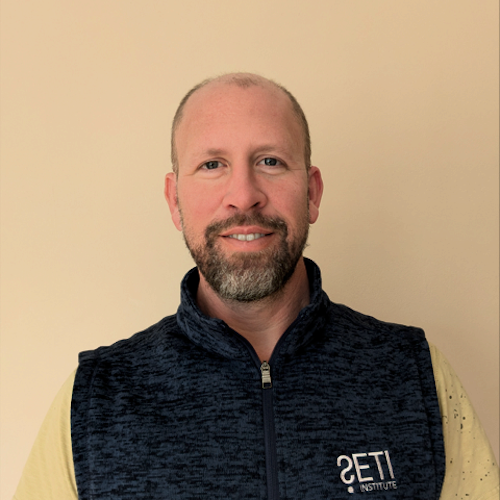
Dr Juan Martinez-SykoraSETI Institute, USA 
Dr Juan Martinez-SykoraSETI Institute, USA Juan Martinez-Sykora obtained his BSc, followed by his master's at the University of La Laguna (Spain) and continued his PhD in Solar physics at the University of Oslo. After that, he moved to Lockheed Martin Solar and Astrophysics Lab and Stanford University as a postdoc. Very soon he became a researcher at BAERI and LMSAL and adjunct associated professor at the University of Oslo. Nowadays, he is a senior researcher at SETI and LMSAL. Juan Martinez-Sykora's research focus on developing model for the solar atmosphere and comparing them to observations. In particular, he is interested in the effects of neutrals on chromospheric physics. Consequently, he is part of the Bifrost development team and the lead of the multi-fluid multi-species numerical code Ebysus. In addition, he has extensive experience performing IRIS planning, analysing observations, and comparing with numerical codes, including observatories such as SDO, Hinode, IRIS, ALMA, and ground-based observatories such as SST. He is highly involved in the development of MUSE (NASA MIDEX program) as science deputy lead. He has published more than 70 scientific papers in peer-reviewed journals. |
| 11:20-11:30 |
Discussion
|
| 11:30-12:00 |
Modelling spatiotemporal elemental abundance variations in the solar atmosphere
It has been well-known for many years that elemental abundances vary across the solar atmosphere, both in space and time, in quiescent, active, and flaring loops as well as in the solar wind. To date, however, models of the solar atmosphere have assumed that the abundances are fixed in space and time, in direct contradiction with those observations. Typically, non-flaring loop and solar wind models have assumed coronal abundances, while flare models have assumed photospheric abundances. As a first test case, time-variable elemental abundances were introduced to the 0D ebtel++ code, modifying the total radiative losses, to show that the cooling and draining timescales of loops are strongly impacted by this assumption. This work has been expanded to the field-aligned HYDRAD code, solving a continuity equation for the abundance factor to track its spatiotemporal evolution. Coronal condensations (eg coronal rain) form as a natural consequence to this modification of radiation, even in impulsively heated loop simulations, whereas previous work has only found condensations in simulations with steady foot-point heating. This work is now being further extended by introducing a ponderomotive acceleration to study the rate at which loops fractionate, to better understand the time-scales of the FIP effect. This requires the introduction of a momentum equation for low FIP elements in addition to the continuity equation. The implications for radiation in the solar atmosphere, for interpretation of spectral lines, and for understanding the FIP effect will all be discussed. 
Dr Jeffrey ReepUniversity of Hawai'i at Mānoa, USA 
Dr Jeffrey ReepUniversity of Hawai'i at Mānoa, USA Dr Reep graduated from Cornell University and received his PhD from Rice University, focusing on the modelling of solar coronal loops and solar flares. He has worked extensively on understanding the transport of energy between the chromospheric-coronal interface in the solar atmosphere. He completed postdoctoral positions at Cambridge University and the US Naval Research Laboratory (NRL), before being hired as an astrophysicist at NRL. He has recently joined the faculty at the University of Hawaii’s Institute for Astronomy, located on Maui, the site of the Daniel K Inouye Solar Telescope. |
| 12:00-12:10 |
Discussion
|
Chair

Dr David Long
Dublin City University, Ireland

Dr David Long
Dublin City University, Ireland
David Long obtained a 1st Class Honours (BA Mod, Physics with Astrophysics) from Trinity College Dublin. This was followed by a PhD in Solar Astrophysics, also from Trinity College Dublin, during which time he spent time as a Predoctoral Fellow at the Harvard-Smithsonian Centre for Astrophysics in Cambridge, MA. He then moved to University College London, where he was an Early-Career Leverhulme Fellow, followed by a STFC Ernest Rutherford Fellow. In 2019, he became a Lecturer in Solar Physics at University College London, and in 2000, he became the UK Principal Investigator for the Extreme Ultraviolet Imager onboard the ESA/NASA Solar Orbiter spacecraft. In 2022, he moved to Queen's University Belfast as a Research Fellow, before starting a position as an Assistant Professor at Dublin City University in 2023. His research focuses on the initiation and evolution of solar eruptions in the solar atmosphere, and to date he has published more than 100 academic papers in peer reviewed scientific journals.
| 13:30-14:00 |
Observational aspects of MHD waves in the lower atmosphere linked to FIP
Magnetic waves associated with MHD waves have been found to be linked to FIP bias regions in the corona, consistent with models based on the ponderomotive force. In this contribution, Dr Stangalini will show how spectropolarimetric measurements in the low chromosphere can be exploited to reveal crucial information for identifying wave modes potentially linked to FIP bias, and discuss the associated challenges. Finally, he will explore potential future steps in this field enabled by forthcoming high-resolution instrumentation. 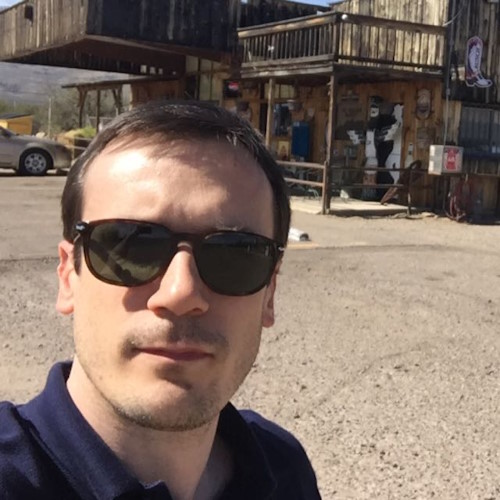
Dr Marco StangaliniItalian Space Agency, Italy 
Dr Marco StangaliniItalian Space Agency, Italy Marco Stangalini is a researcher at the Italian Space Agency. His main scientific interest is the study of MHD waves in the lower atmosphere, based on high-resolution spectropolarimetry. He co-founded the international working group WaLSA (Waves in the Lower Solar Atmosphere). He is involved in the development of several upcoming solar space missions, including Solar-C and MUSE. |
|---|---|
| 14:00-14:15 |
Discussion
|
| 14:15-14:45 |
Observational constraints on the connection between solar coronal abundances and the underlying lower atmospheric properties
Elemental abundances in the solar atmosphere, typically measured from EUV and X-ray observations, are often different from the solar photospheric abundances. The first ionization potential (FIP) of the element appears to be play a significant role in the observed fractionation, which is thought to be linked to the processes responsible for heating the solar atmosphere. In the solar atmosphere, elements with low FIP often show a relative enrichment with respect to elements with high FIP (FIP effect). The extent of such FIP effect is observed to vary broadly across solar features, with some solar features (such as eg most flares) showing an inverse FIP effect. Despite the widespread presence of chemical fractionation, and its potential importance for understanding the processes governing the solar atmosphere, this phenomenon and its original are still poorly understood. We used coordinated coronal spectral observations taken with Hinode/EIS, and chromospheric and transition region spectral observations taken with IRIS, to investigate the presence of a footprint of the chemical fractionation process in the lower atmosphere. Such a footprint for the FIP effect is expected, given that the lower atmosphere is where most elements get ionized. We study the spatial and temporal properties of coronal chemical composition and corresponding chromospheric properties, for a variety of solar features. We discuss intriguing correlations between coronal abundances and chromospheric properties, which can potentially constrain models of chemical fractionation. 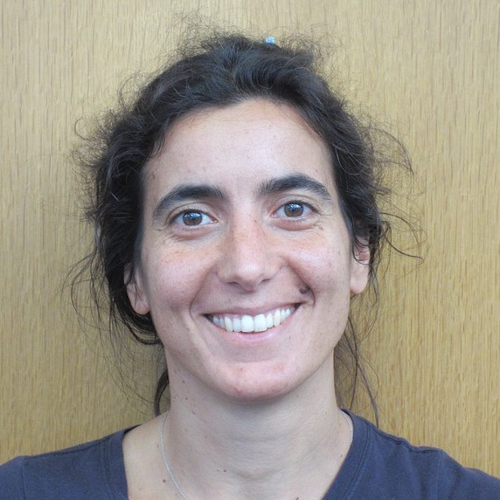
Dr Paola TestaHarvard Smithsonian Center for Astrophysics, USA 
Dr Paola TestaHarvard Smithsonian Center for Astrophysics, USA Dr Paola Testa is an Astrophysicist at the Harvard-Smithsonian Center for Astrophysics (USA). She received her doctorate in Physics at the University of Palermo (Italy) on the topic of coronal activity in the Sun and other stars, and then held a post-doctoral appointment at the Kavli Institute for Astrophysics at the Massachusetts Institute of Technology. Her research focused on understanding the heating mechanisms and high-energy processes in the hot outer layers of the atmosphere of the Sun and other stars by combining observations with advanced numerical modelling. She is also involved in development, observations, and dissemination of data of space instrumentation: she is co-investigator of several solar missions, including the Hinode/X-ray telescope (XRT, the Interface Region Imaging Spectrograph (IRIS), and the Multi-Slit Solar Explorer (MUSE, NASA Heliophysics Medium-Class Explorer to be launched in 2027). |
| 14:45-15:00 |
Discussion
|
| 15:00-15:30 |
Break
|
| 15:30-16:00 |
The connection between chromospheric transverse MHD waves and coronal abundance fractionation in a solar active region observed with FISS/GST and EIS/Hinode
The elemental composition of the solar corona differs from the photosphere due to the FIP effect, where low first ionization potential (FIP) elements exhibit enhanced abundances. This fractionation is attributed to ponderomotive forces generated by magnetohydrodynamic (MHD) waves, particularly incompressible transverse waves. We investigate how chromospheric transverse MHD waves influence coronal abundance fractionation by analysing their spatial correlation and wave properties. Using Hα observations from the Fast Imaging Solar Spectrograph (FISS) and EUV spectra from the EUV Imaging Spectrometer (EIS)/Hinode, we detect transverse waves in the chromosphere and determine coronal abundances of Si X (low-FIP) and S X (high-FIP). Magnetic field extrapolations from SDO provide insight into the connectivity between the chromosphere and corona. We identify ~400 wave packets and characterise their properties, including period, velocity, amplitude, and propagation direction. These waves, predominantly incompressible, are concentrated near loop footpoints, particularly in sunspot penumbra and superpenumbral fibrils. Strong abundance fractionation is observed in regions with closed magnetic structures, indicating the key role of magnetic confinement. 43% of detected waves are low-frequency downward-propagating waves. Our findings support the hypothesis that ponderomotive forces from chromospheric transverse waves drive elemental fractionation, providing observational constraints on the FIP effect. 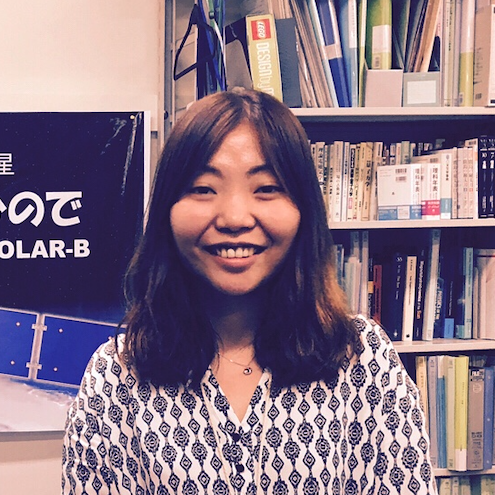
Dr Kyoung-Sun LeeSeoul National University, Republic of Korea 
Dr Kyoung-Sun LeeSeoul National University, Republic of Korea Kyoung-Sun Lee is a Research Associate Professor at Seoul National University, South Korea, conducting research in solar physics and space weather. She obtained her BSc, MSc, and PhD in Astronomy and Space Science from Kyung Hee University. She has held research positions at the Institute of Space and Astronautical Science (ISAS) at JAXA, the National Astronomical Observatory of Japan (NAOJ), and the University of Alabama in Huntsville. Her research focuses on solar eruptive phenomena such as flares, coronal mass ejections, and jets, as well as on the spectroscopic diagnostics of the solar atmosphere. She uses both space-based observatories, including Hinode, IRIS, SDO, and SOHO, and ground-based instruments such as the Fast Imaging Solar Spectrograph (FISS) on the Goode Solar Telescope. She has been actively involved in observational planning and data analysis for both Hinode/EIS and GST/FISS. Her work also incorporates deep learning techniques for the spectral inversion of chromospheric lines. Recently, she has been investigating the relationship between chromospheric wave dynamics and elemental abundances in the solar corona using multi-wavelength spectroscopic observations. |
| 16:00-16:15 |
Discussion
|
| 16:15-16:45 |
Exploring the link between wave activity in the photospheric velocity driver and the FIP bias in the solar corona
This work investigates wave activity on the Solar Photosphere in the presence of active regions, aiming to explore a possible connection with a phenomenon observed in the Solar Corona: the First Ionization Potential (FIP) effect. This effect refers to a chemical inhomogeneity in the solar atmosphere, where elements with low first ionization potential are preferentially transported to higher atmospheric layers. It is often associated with the reflection of magnetohydrodynamic waves (Laming 2017). Building on previous studies by Murabito, M. et al. (2021) and Baker et al. (2021), which focused on a single active region over a short period, this study extends the analysis by following the evolution of active regions during their entire transit across the solar disk. This approach provides a broader temporal perspective, rarely addressed in this context. We analysed the propagation of high-frequency waves in the photospheric velocity field, with particular attention to active region 12665, observed for six consecutive days in July 2017. During the same period, sixteen FIP bias maps are available from the EIS instrument aboard the Hinode satellite. By monitoring active regions throughout their disk passage, we aim to better understand the temporal evolution of their wave dynamics and how these may contribute to elemental fractionation in the upper solar atmosphere. The results may offer new insights into the mechanisms behind the FIP effect and the role of photospheric activity in shaping coronal properties. Mr Andrea MesoracaItalian Space Agency, Italy Mr Andrea MesoracaItalian Space Agency, Italy Andrea Mesoraca is a PhD student in Astrophysics at the University of Palermo, in collaboration with the Italian Space Agency. His research focuses on the propagation and excitation of waves in the solar atmosphere, with particular emphasis on their interaction with active regions and magnetic field structures in the photosphere. |
| 16:45-17:00 |
Discussion
|
Chair

Dr Paola Testa
Harvard Smithsonian Center for Astrophysics, USA

Dr Paola Testa
Harvard Smithsonian Center for Astrophysics, USA
Dr Paola Testa is an Astrophysicist at the Harvard-Smithsonian Center for Astrophysics (USA). She received her doctorate in Physics at the University of Palermo (Italy) on the topic of coronal activity in the Sun and other stars, and then held a post-doctoral appointment at the Kavli Institute for Astrophysics at the Massachusetts Institute of Technology. Her research focused on understanding the heating mechanisms and high-energy processes in the hot outer layers of the atmosphere of the Sun and other stars by combining observations with advanced numerical modelling. She is also involved in development, observations, and dissemination of data of space instrumentation: she is co-investigator of several solar missions, including the Hinode/X-ray telescope (XRT, the Interface Region Imaging Spectrograph (IRIS), and the Multi-Slit Solar Explorer (MUSE, NASA Heliophysics Medium-Class Explorer to be launched in 2027).
| 09:00-09:30 |
Solar Orbiter/SPICE: spectral lines and advanced atomic modelling
As part of the Solar Orbiter remote sensing payload, the Spectral Imaging of the Coronal Environment (SPICE) is the high resolution spectrometer that observes the Sun in two extreme ultraviolet wavelength bands, 70.4-79.0 nm and 97.3-104.9 nm. SPICE is designed to provide spectroheliograms using a core set of emission lines arising from ions of elements such as hydrogen, carbon, nitrogen, oxygen, neon, magnesium, sulphur, argon and iron. These lines are formed over a wide range of temperatures, enabling the analysis of different layers of the solar atmosphere, from the chromosphere (20,000 K) to the upper transition region (0.6 MK), as well as the corona at temperatures up to 10 MK and beyond when observing flares, and complementing the IRIS and EIS instruments. SPICE spectroheliograms can be processed to study the source regions of outflows and ejection processes which connect the solar surface to the heliosphere, providing a quantitative knowledge of the physical state and composition of the plasma in the solar atmosphere. Atomic physics provides the link that enables the observed spectra to be interpreted in terms of the properties of the source from which they arise. This work focuses on the identification of the spectral lines observed by SPICE since the Solar Orbiter Cruise Phase and through the Nominal Mission Phase, and on the appropriate atomic modelling for the analysis of the spectra in different solar conditions. It concentrates also on the lines that can be used for deriving composition maps and the atomic data available. 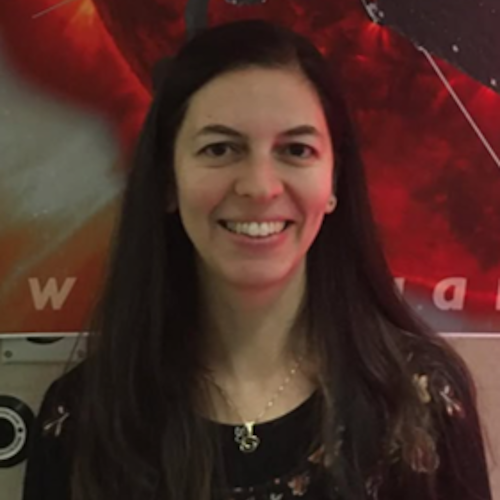
Professor Alessandra GiuntaUniversity of Catania, Italy 
Professor Alessandra GiuntaUniversity of Catania, Italy Alessandra Giunta is Associate Professor at the University of Catania (Italy). Up to December 2024, she has been a Senior Research Scientist at RAL Space in the role of Operation Scientist of Solar Orbiter/SPICE. She is SPICE co-I since 2013, currently providing scientific support for the operation of the instrument as Visiting Scientist at RAL, and leads several Solar Orbiter Observing Programs. She has special experience in generalised collisional-radiative theory, differential emission measure analysis and spectral diagnostics. She has been involved in the Atomic Data and Analysis Structure (ADAS) project and was a member of in delivering ADAS courses in Europe, US, China, Korea and Japan. She has also participated in a number of observational campaigns and spectral measurements from spacecraft, including SoHO and Hinode. Her current work is orientated to spectroscopic analyses of the SPICE spectrometer observations and is focussed on the study of dynamical solar, astrophysical and fusion plasmas. |
|---|---|
| 09:30-09:40 |
Discussion
|
| 09:40-10:10 |
Characterisation of solar eruptions with Solar Orbiter and synergies among instruments
Understanding elemental abundance variations in the solar corona is crucial not only for studying the quiet Sun but also for investigating eruptive phenomena such as solar flares and coronal mass ejections (CMEs). These variations provide key diagnostics for identifying the source regions of eruptions and tracking their evolution into the heliosphere. In this talk, Dr Sasso will present recent efforts within the Solar Orbiter community to build a comprehensive catalogue of eruptions, combining data from different instruments to study their plasma properties and dynamics. In particular, she will discuss how in-situ measurements are revealing insights into the composition of erupted plasma and solar energetic particles, allowing us to connect CMEs observed remotely with their signatures in the solar wind. Moreover, abundance variations are also observed in solar flares, although detailed spectral diagnostics in the soft X-ray range are required to investigate them. While STIX on Solar Orbiter cannot directly resolve these spectral lines, ongoing efforts are exploring synergies with other soft X-ray spectrometers to study these variations. In addition to these studies, Dr Sasso will also discuss Solar Orbiter initiatives focused on abundance diagnostics, including the dedicated Coronal He abundance SOOP (Solar Orbiter Observing Plan), which has not yet been fully implemented. These observational strategies will be crucial for future investigations on abundance fractionation processes in both quiescent and eruptive solar phenomena. 
Dr Clementina SassoINAF-Osservatorio Astronomico di Capodimonte, Italy 
Dr Clementina SassoINAF-Osservatorio Astronomico di Capodimonte, Italy Dr Sasso is a researcher in solar physics with a PhD in Natural Sciences (Astronomy and Astrophysics) from the University of Göttingen, with research conducted at the Max Planck Institute for Solar System Research. Dr Sasso works at the INAF-Capodimonte Astronomical Observatory in Naples, with a focus on the solar atmosphere and heliosphere, particularly in data analysis and modelling. Dr Sasso is Co-Investigator of the Metis coronagraph onboard the ESA/NASA Solar Orbiter mission, responsible for planning and communication. She also serves as Co-Chair of the Modelling and Data Analysis Working Group (MADAWG) established by ESA for the mission. Dr Sasso is chair of the "Professional-Amateur Relations in Astronomy" Working Group of the International Astronomical Union (IAU), actively engaged in fostering collaboration between professional researchers and amateur astronomers. I’m holding the Italian national qualification for Associate Professor. |
| 10:10-10:20 |
Discussion
|
| 10:20-10:50 |
Break
|
| 10:50-11:20 |
Using Solar Orbiter compositional information to understand the nascent solar wind observed by Parker Solar Probe
The continuous outflow of solar wind that fills and shapes the heliosphere originates from many places in the corona that drive the variation in the elemental abundances, ion fractions, mass flux, level of Alfvénicity, and turbulence spectra observed in in situ observations. The collection of properties measured in the heliosphere are intimately connected to how the solar wind forms and evolves from the Sun. A key characteristic of young solar wind is that it is filled with large-amplitude Alfvénic fluctuations, called magnetic switchbacks, which are shown to be an important driver to the heating and acceleration it experiences after leaving the corona. Although, extensively studied since Parker Solar Probe's first solar encounter reaching 37.7 solar radii in 2018, the genesis of magnetic switchbacks remains elusive. To investigate their formation processes, the talk will discuss results from joint observations between Parker Solar Probe and Solar Orbiter that aim to probe the sources of solar wind containing magnetic switchbacks structures through heavy ion signatures observed across several spacecraft conjunctions. The heavy ion properties measured in the solar wind provide critical insight to the coronal conditions and sources of heliospheric structures, including the magnetic environment that drive fractionation processes prior to solar wind release, and therefore can deepen our understanding of the early development of switchback structured in the sub-Alfvénic region of the Sun. 
Dr Yeimy RiveraHarvard Smithsonian Center for Astrophysics, USA 
Dr Yeimy RiveraHarvard Smithsonian Center for Astrophysics, USA Dr Yeimy J Rivera is an astrophysicist at the Center for Astrophysics | Harvard & Smithsonian, specialising in heliophysics, solar physics, and plasma physics research. She earned her PhD in Space Physics at the University of Michigan in 2020. She is part of NASA's Parker Solar Probe and ESA's Solar Oribter team. She is the Project Scientist for future solar telescope – EUV CME and Coronal Connectivity Observatory (ECCCO), and for the Airborne Coronal Emission Surveyor (ACES) 2024 eclipse mission. Her research pertains to understanding how the Sun generates the continuous outflow of solar wind and how it influences interplanetary space and the solar system. Specifically, she investigates the origin, composition, and evolution of the solar wind by modelling and analysing heavy ions and other plasma signatures through a combination of remote and in situ observations of the Sun. |
| 11:20-11:30 |
Discussion
|
| 11:30-12:00 |
Heavy-ion properties of magnetic switchbacks
Reversals of the interplanetary magnetic field that do not change sector polarity are frequently observed near the Sun. The formation of these so-called switchbacks is unexplained and presents an intriguing opportunity to link processes in the solar atmosphere to the solar wind. This work reveals the origin of a switchback by reporting the first in situ heavy ion measurements in such a structure with observations by Solar Orbiter. This provides compelling evidence of hot coronal origin and indicates interchange reconnection as the source mechanism. Next, a novel semi-empirical method to trace the ion-charge state from the corona, provided observations by Solar Dynamics Observatory, into the solar wind is shown to be consistent with Solar Orbiter measurements of the ion-charge state ratio. The method indicates the switchback was exhausted from either coronal-hole magnetic loops or along a coronal-hole boundary. Switchbacks link the solar atmosphere and the solar wind providing observations to explore the processes that heat the solar corona and accelerate the solar wind. 
Dr Jesse CoburnImperial College London, UK 
Dr Jesse CoburnImperial College London, UK Dr Jesse Coburn completed his Bachelor’s degree in Physics at the University of New Hampshire with a thesis title “Solar Wind Turbulence,” supervised by Professor Charles W Smith. Jesse completed his PhD with thesis title “The Effective Mean Free Path of the Solar Wind,” supervised by Dr Christopher H K Chen. He has held graduate research assistance posts at Los Alamos National Laboratory and the University of Calabria, Italy. After completion of this PhD he was a research fellow at University College London and now is a research fellow at Imperial College. Jesse’s research thus far focusses on in situ observations of solar wind turbulence and kinetic physics. More recently, he has been working on in situ observations of heavy ions and remote sensing. |
| 12:00-12:10 |
Discussion
|
Chair
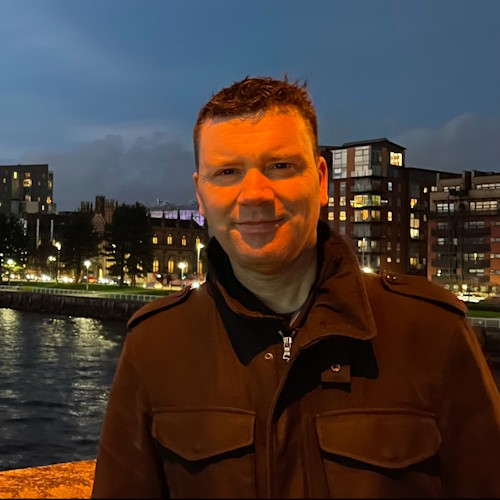
Professor David H Brooks
Computational Physics, Inc, USA

Professor David H Brooks
Computational Physics, Inc, USA
David Brooks obtained a BSc 1st class Hons in Astronomy and Mathematics from the University of Glasgow in Scotland, followed by a PhD in Solar Astrophysics from the University of Strathclyde and Rutherford Appleton Laboratory. He then held postdoctoral fellowships at the University of Porto, Portugal, and the University of Kyoto, Japan, before joining the Naval Research Laboratory, USA, in 2005 to work on the Hinode satellite mission. He has been a resident scientist at the operations centre in Japan since the launch in 2006, and is the NASA Hinode project representative at JAXA. He is also an Honorary Professor at University College London Mullard Space Science Laboratory. His research focuses on the structure, dynamics, and radiating properties of the solar atmosphere and solar wind. He also likes to broaden his horizons to investigate the solar-stellar connection. He has published more than 120 academic papers in peer reviewed scientific journals.
| 13:30-14:00 |
Understanding EUV solar plasma composition in flares: spatial and temporal perspectives
Understanding how and why elemental abundances evolve during solar flares remains one of the key challenges in solar physics, offering fundamental insights into energy releases and mass transport processes in the solar atmosphere. Recent extreme-ultraviolet (EUV) spectroscopic observations from Hinode/EIS have revealed intriguing spatial and temporal patterns in plasma composition during flares, challenging our current theoretical understanding. This talk will present observations showing persistent enhanced First Ionisation Potential (FIP) bias concentrated at flare loops tops while maintaining near-photospheric values at footprints, and examine how newly developed composition diagnostics using specific element pairs (Ca, Ar, Fe, and S) are advancing our understanding of plasma evolution and heating processes across different flare phases. The discussion will extend slightly to how upcoming high-cadence spectroscopic observations from missions like Solar-C EUVST, combined with emerging modelling efforts, could help resolve outstanding questions in flare composition evolution. 
Dr Andy SH ToEuropean Space Agency, The Netherlands 
Dr Andy SH ToEuropean Space Agency, The Netherlands Dr Andy SH To is a Research Fellow at the European Space Agency (ESA), specialising in solar spectroscopic analysis. After receiving his PhD in Solar Physics at University College London in 2023, he focuses on understanding plasma composition evolution in the solar atmosphere. His research combines multi-instrument observations from space-based observatories like Hinode, IRIS, and Solar Oribter to investigate how plasma parameters evolve during solar flares and their connection to fundamental solar physics questions like coronal heating. Recently, he has expanded his work to include computational modelling of fractionation processes in dynamic solar atmosphere. Dr To regularly facilitates observing campaigns between ground and space-based facilities, while developing open-source Hinode/EIS spectroscopic analysis tools to enhance data accessibility for the solar physics community. His current research interests span from chromospheric dynamics to coronal composition, with particular emphasis on understanding the physical mechanisms behind elemental fractionation during solar activity. |
|---|---|
| 14:00-14:15 |
Discussion
|
| 14:15-14:45 |
Plasma fractionation observed using X-rays
”Sun as a star” solar spectral soft X-ray (SXR) studies integrate spatially across the entire Sun. These SXR spectral observations have varied from high spectral resolution over a narrow energy bandpass or a moderate spectral resolution over a broad energy bandpass observing different solar phenomena like quiescence and solar flares using. Previous SXR spectral analyses have inferred elemental composition of the corona during non-flaring and flaring times. During solar flares, the low First Ionization Potential (FIP) elements, Fe, Ca, Si and S, have been observed to be depleted near the SXR peak. This depletion effect is consistent with the chromospheric evaporation process where lower atmospheric plasma from the chromosphere fills the coronal loops. In non-flaring times SXR spectral observations have shown consistent FIP enhancement in the corona over the photospheric abundance values. We present spectral analysis results of elemental variations from MESSENGER/SAX, Chandrayaan-1 and 2/XSM, MinXSS-1 and 2 Cubestats and InspireSat/DAXSS CubeSat. The different SXR observations provide a clue on the variation of abundances during different phases of solar activity. Finally, future novel technology in instruments allows spatially and spectrally resolved SXR observations and will contribute significantly to our understanding of solar dynamics including a better understanding of elemental abundance variations. 
Dr Crisel SuarezVanderbilt University, USA 
Dr Crisel SuarezVanderbilt University, USA Crisel Suarez earned her Physics PhD from Vanderbilt University and was a Smithsonian Astrophysical Observatory Predoctoral Fellow. She has analysed data from Hinode/XRT, SDO/AIA, GOES/XRS, MinXSS-1&2, and InspireSat/DAXSS. She has examined soft X-ray (SXR) spectral observations to understand the deviations of elemental abundances from the twin MinXSS CubeSats. Her current research focuses on understanding the mechanisms that could drive Quasi-Periodic Pulsations (QPPs) in flares using SSAXI-Rocket and Hi-C flare data. She also enjoys engaging in science outreach events, promoting research, curiosity, creativity and mentoring the next generation of scientists! |
| 14:45-15:00 |
Discussion
|
| 15:00-15:30 |
Break
|
| 15:30-16:00 |
Elemental abundances in other stars
The chemical composition of stars other than the Sun can be studied using optical, ultraviolet and X-ray spectra, each providing insight into difference layers of their atmospheres. Compared to the Sun, obtaining high-quality spectra of distant stars for abundance analysis is more challenging. However, the diverse range of objects makes the effort worthwhile, as each star is a unique laboratory for investigating elemental abundances and detecting anomalies like the FIP effect. By studying other stars, we can see which astrophysical parameters affect the abundance variations, and we can also put the solar observations into context. In this talk we will discuss how we can measure the elemental abundances of stars and what we know so far, with special attention to the stellar FIP effect. 
Mr Bálint SeliEötvös University, Hungary 
Mr Bálint SeliEötvös University, Hungary Bálint Seli is an astronomy PhD student at Eötvös University, working as a member of the STARK research group at Konkoly Observatory, Hungary. He has regular observing duties with the telescopes of the observatory. His main research field is stellar magnetic activity, including the statistical study of starspots and flares of late-type stars, active giants and ultracool dwarfs mostly with space photometric light curves. He is also interested in detecting known solar activity phenomena on others stars, including CMEs, activity cycles and also the FIP effect. |
| 16:00-16:15 |
Discussion
|
| 16:15-17:00 |
Panel discussion/ overview (future directions)
|

.png)
